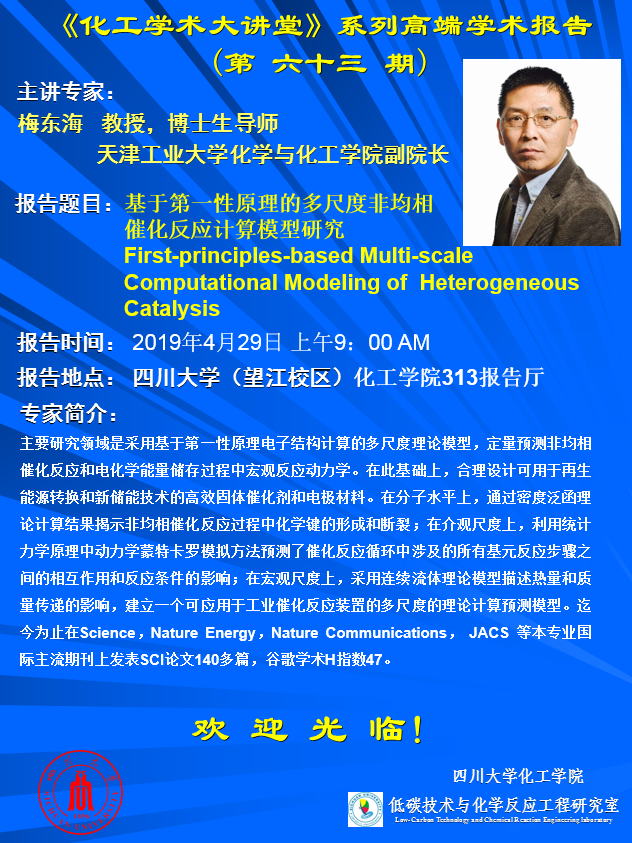

讲座摘要:
Developing multi-scale computational modeling capability that enables us to improve the catalyst performance, invent new catalytic processes and technologies is vital for economically conversion of coal- and biomass-derived resources to low-carbon energy platforms such as synthetic natural gas, transportation fuels, and other value-added chemicals. Since heterogeneous catalytic phenomena span a wide range of time and length scales, a full description of a practicalheterogeneouscatalytic system from the microscopic to the macroscopic level needs multi-scale computational modeling. On each scale, the computational model deals with different time and length regime using differentcomputational chemistry theories and statistical mechanical simulation models. In particular, first-principles density functional theory (DFT) calculations are used to explore unbiased reaction mechanisms and obtain the thermodynamics and kinetics information of elementary reaction steps over well-defined catalyst surfaces; kinetic Monte Carlo (KMC) simulations with the DFT-determined kinetic information are then used to predict the reaction kinetics under operating reaction conditions. Finally, by integrating DFT-based KMC with the stochastic partial differential equation theory (SPDE), which is used for describing mass and heat transfer over the catalyst surface, a multi-scale multi-phase computational model is developed to predict the macroscopic catalytic performance in the industrial reactor.In this talk, I willdiscuss the above computational model via specific reaction systems such asmethanol decomposition over copper surfaces,reaction kinetics of nitric oxide on the three-dimensional platinum nanoparticles under lean-burn conditions, and CO oxidation on ruthenium oxide surface with mass and heat transfer as the demonstration cases.

